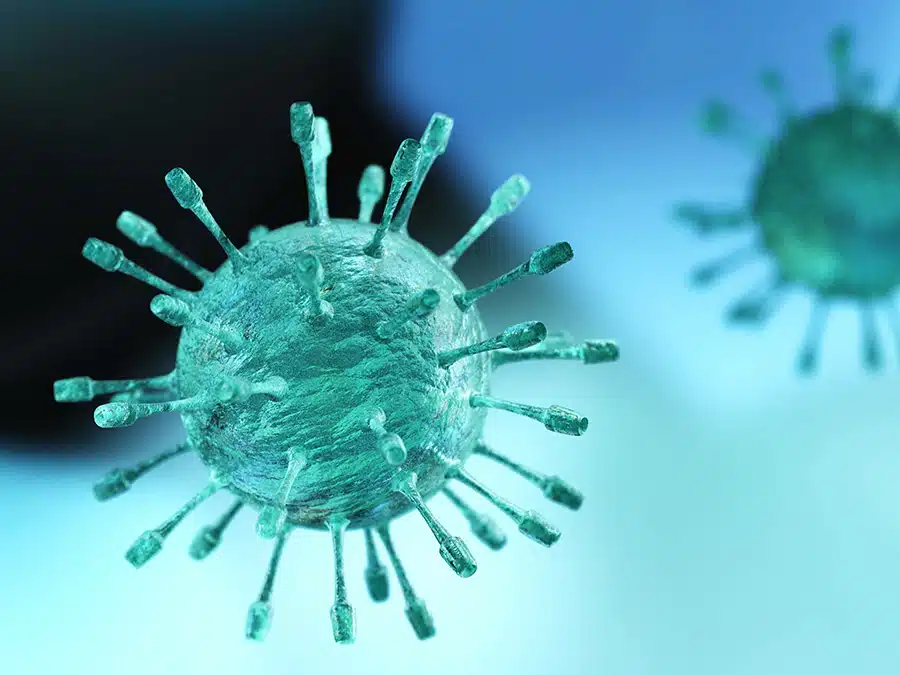Log reductions offer a simple way to demonstrate how effective a product, such as a disinfectant, is at reducing pathogens. In laboratory testing methods, a sample of pathogen is prepared and the number of colony forming units (CFUs) counted before the sample is treated. After testing is carried out, the number of CFUs are counted again and the difference is expressed logarithmically.
For example, a 90% reduction in pathogens is expressed as a log 1 reduction, while a 99.99% reduction as a log 4 reduction. The essential thing to remember is that the higher the log value, the more effective the product is at reducing the number of pathogens present.
A visual representation of log reductions in laboratory testing
Back to school
Most of us haven’t dealt with logarithms since school, so here’s a quick revision course!
‘Log’ is short for logarithm, a mathematical term for a magnitude to which a number can be raised. For example, if using 10 as a base number, a log 3 increase can be shown as 103 or 10 x 10 x 10 = 1,000.
A log reduction takes the magnitude in the opposite direction. For example, a log reduction of 1 is equivalent to a 10-fold reduction or, to put it another way, moving down one decimal place or a 90% reduction.
In disinfectant efficacy testing, the result of the difference between the control and the test product is expressed as a log reduction. For example, if the number of CFUs in the control was found to be 1,000,000 (or 106) and the end result using the product was only 1,000 (103), that would be a log reduction of 3 or a reduction of 99.9%.
| Log Reduction | Reduction | Times smaller | Amount remaining |
| 0 Log Reduction | 0% | 0 | All of it |
| 1 Log Reduction | 90% | 10 | A tenth |
| 2 Log Reduction | 99% | 100 | A hundredth |
| 3 Log Reduction | 99.9% | 1000 | A thousandth |
| 4 Log Reduction | 99.99% | 10000 | One in ten thousand |
| 5 Log Reduction | 99.999% | 100000 | One in a hundred thousand |
| 6 Log Reduction | 99.9999% | 1000000 | One in a million |
So, the higher the log reduction, the more effective the product.
Using one of our test results as a working example, Enduro Hand Sanitiser was tested according to EN 13697 against Escherichia coli using a contact test time of 5 minutes. The control of bacteria was given as 4.02 x 106 (4,020,000 CFUs). The number of CFUs remaining after the 5 minute contact test time using Enduro Hand Sanitiser was <10 and a log reduction given of >5.60, i.e. >99.9999% reduction. As such, Enduro Hand Sanitiser is shown to be highly efficient at reducing the number of bacteria.
If we take antimicrobial hospital curtains as another example, there are some brands on the market which offer a log reduction value of 3. This seems quite impressive as it means that 99.9% of the tested for pathogens will be removed. However, Endurocide Antimicrobial Curtains have log reduction ratings of 4 or 5 depending on which type of pathogen is being measured. As we have already seen, this means that Endurocide’s curtains are one or two orders of magnitude more efficient at killing pathogens than these products.
We hope this information helps with your understanding of log reductions. Should have any questions, or you’d like to see the log reductions our high performance, water-based products can offer, please get in touch.
Bio Technics Ltd. Linton Business Park, Gourdon, Aberdeenshire, Scotland UK DD10 0NH
Tel:+44(0) 1561 361515
Email: info@endurocide.com






